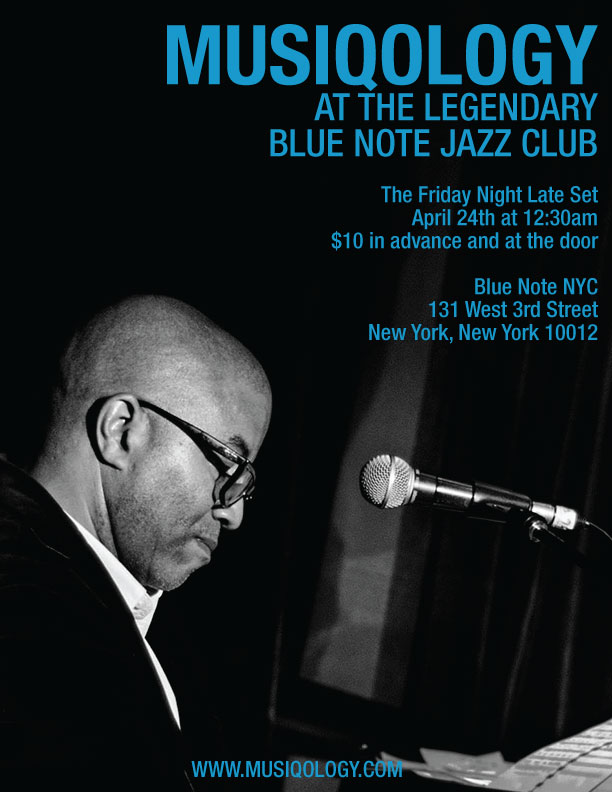I’ll be heading to my performances this weekend in Peterborough, Boston, and Brookline, but if I didn’t have gigs of my own I would be considering the following:
- my Penn colleague Guthrie Ramsey plays at the Blue Note this Friday, April 24 (see poster below). Check out Dr. Guy’s blog, Musiqology.
- The New York Virtuoso Singers offer a program with works by Luigi Dallapiccola, Elliott Carter, Thea Musgrave, George Perle, George Tsontakis, Hugo Weisgall, Karol Rathaus, Joel Mandelbaum, Leo Kraft, Allen Brings, Edward Smaldone, Bruce Saylor and David Schober at Merkin Hall in NYC on Saturday, April 25, 8:30 pm.
- Bowerbird presents Either/OR playing For Philip Guston by Morton Feldman in a free concert at The Rotunda in Philadelphia this coming Sunday, April 26. The performance begins at 3 pm. Scored for piano/celesta, flute, and percussion, this is a work in Feldman’s late super-long style; the piece will last about 4 and a half hours.
